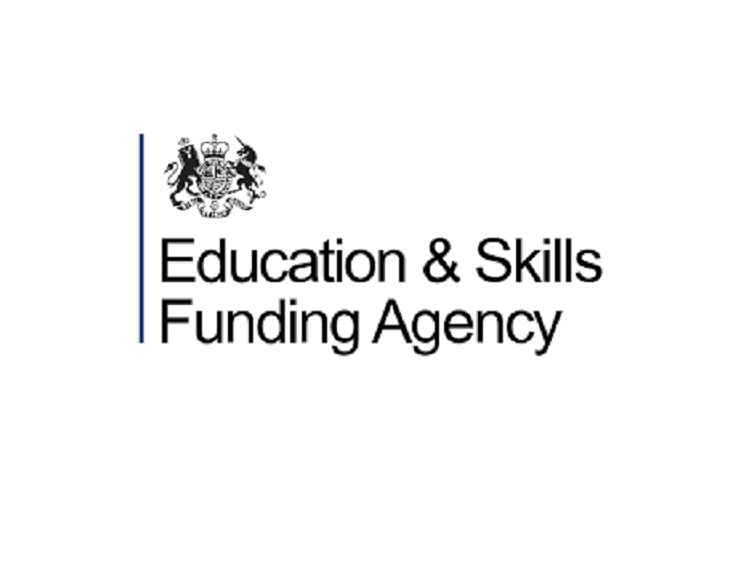Early intervention strategy

The purpose of the Education Funding Agency’s (EFA) and Skills Funding Agency’s (SFA) early intervention strategy is to engage with sixth-form colleges (SFC) and general further education colleges (GFEC) where their financial plans, ongoing indicators or other data sources suggests that there is a risk of failure. Unless specified we will use the term ‘college’ to denote both SFCs and GFECs.
We will work with colleges to facilitate swift mitigating actions that focus on ensuring a return to sound financial resilience and, where required, improvement in quality. Our aim is to lower the risk of a college falling into the scope of formal intervention measures and achieve a rapid turnaround at a lower cost to public funds, while maintaining high quality learning delivery to students, adult learners and employers.
This single approach to early intervention replaces previously separate general further education colleges and sixth-form colleges policies for early intervention issued by the SFA and EFA.
Risk-assessment approach
We will target our early intervention using a risk-based approach. We use our risk-assessment approach to cross-reference financial and quality data for colleges alongside other soft information.
Area reviews
Where an early intervention coincides with an area review we will continue with the intervention in the usual way. However, we will take into account the findings and recommendations from that review.
Key triggers of early intervention
While we will consider each college’s position on a case-by-case basis, there are some clear triggers below where we will intervene early and expect that the college would take action to prevent the issue becoming a greater concern:
-
Where there is a significant decline in the financial health score resulting in a ‘satisfactory’ grade.
-
Where the financial health score is a weak ‘satisfactory’ (that is, equal to or less than 120 points and/or current and earnings before interest, taxes, depreciation, and amortisation (EBITDA) ratios are less than or equal to 80 points).
-
Where our forecasting demonstrates that the college is at risk of moving into ‘inadequate’ in the future unless it takes preventative action. This forecasting could include financial data, demographic/learner number data such as national demographic statistical forecasting, individualised learner record (ILR) returns, funding assumptions and so on. We will share with the college any work carried out to explain the basis for our proposed action/s.
-
Other data may also be taken into account such as complaints or whistle blowers.
-
Two consecutive ‘requires improvement’ grades for overall effectiveness following Ofsted inspection.
We may also take account of other information, where the calculated triggers above have not been activated and we consider that there is sufficient risk to agency funding. We will look at information such as trends in student and learner numbers, complaints or whistleblowers.
You can find details of how we assess and score financial health of colleges in the Financial Planning Handbook. This document also includes information on the scoring process and timetable for submission of information to the agencies.
We will write to a college to confirm that we have assessed the college at risk and placed them in early intervention. We will not publish information on colleges assessed in early intervention, but we will share the information with our internal partners within government, such as Ofsted, the FE Commissioner and other government departments.
We will focus early intervention discussions with colleges around 3 key features :
-
Financial – how well does the college understand its current and future financial position, and what steps is it taking to remedy identified issues?
-
Operational – how does the college identify, monitor, benchmark and respond to financial key performance indicators?
-
Strategic – what steps has the college taken, or have planned, to respond to influences that impact on its capacity to offer appropriate high-quality provision?
To help us understand how a college is dealing with the identified risk, we will request all or some of the following:
-
management accounts, including commentary, actual staff costs and as a percentage in year of turnover, and forecast cash flow
-
an assessment of the impact of any funding clawback profile (where appropriate) – for example, for the funding year 2015 to 2016, identifying the impact on budget/cash flow/financial plan and ability to make timely repayments in the funding year 2016 to 2017
-
banking terms, including routine renewal dates of arrangements, including overdrafts, loans and any requirements to seek additional financial support
-
copies of reports to the college’s senior management team and governors – for example, key performance indicators (KPIs), statistical information, other operating measures, indications of corporation review and challenge to these. This includes information on recruitment, retention and achievement of students and learners.
-
a copy of the college’s risk plan, including triggers for mitigating actions and the college’s approach to timely identification and management of risk
-
information about partnerships and subcontracting arrangements, including:
- income and charging forecasts
- in-year and forecast volumes
- costs
- contributions
- performance compared to financial plan
-
information on planned strategic developments, which may include:
- federation or merger arrangements with other colleges or training organisations, including those recommended by area reviews
- proposed shared service arrangements
- corporate reorganisation considerations
-
reports from college auditors on the management of the colleges, including financial compliance and health
We reserve the right to ask for any further information that could help us understand why the college is at risk and what the college is doing to reduce that risk.
Our work with colleges
We will work with a college to agree actions that will lead to the reduction of risk and return to stability. Each action we agree will be:
- specific – target a clear area for improvement
- measurable – quantify an indicator of progress and achievement
- attributable – specify who will do it.
- realistic – what results can realistically be achieved, given available resources
- time bound – specify when the result(s) will be achieved
Once we agree a set of actions with a college, we will confirm them in writing and they will become additional conditions of funding. These letters will not be published.
Mitigating actions
We want to work closely with a college to help it overcome the issues that have triggered our intervention. However, where early intervention dialogue suggests that a college is not taking appropriate action to reduce the risk of failure, we will request that the college take some or all of the following steps:
-
set up a meeting with the chair and/or the full corporation and us to escalate the issues identified, where we will explain why we have identified that the college is at risk
-
increase financial or quality expertise on the board of governors
-
link with other colleges that have proven strengths in the relevant areas
-
demonstrate how the college is planning to tackle financial health decline: this may include undertaking a cost scrutiny exercise to identify how to reduce costs and/or bring them within sector norms
-
provide additional key data on a regular basis to us, such as monthly management accounts
-
review its position in the market and take account of the findings of such a review: this may have been done through an area review
Escalation
Where the college fails to demonstrate sufficient progress in resolving the issue we may escalate our intervention. This will be in line with the funding agencies’ respective funding agreements:












Responses